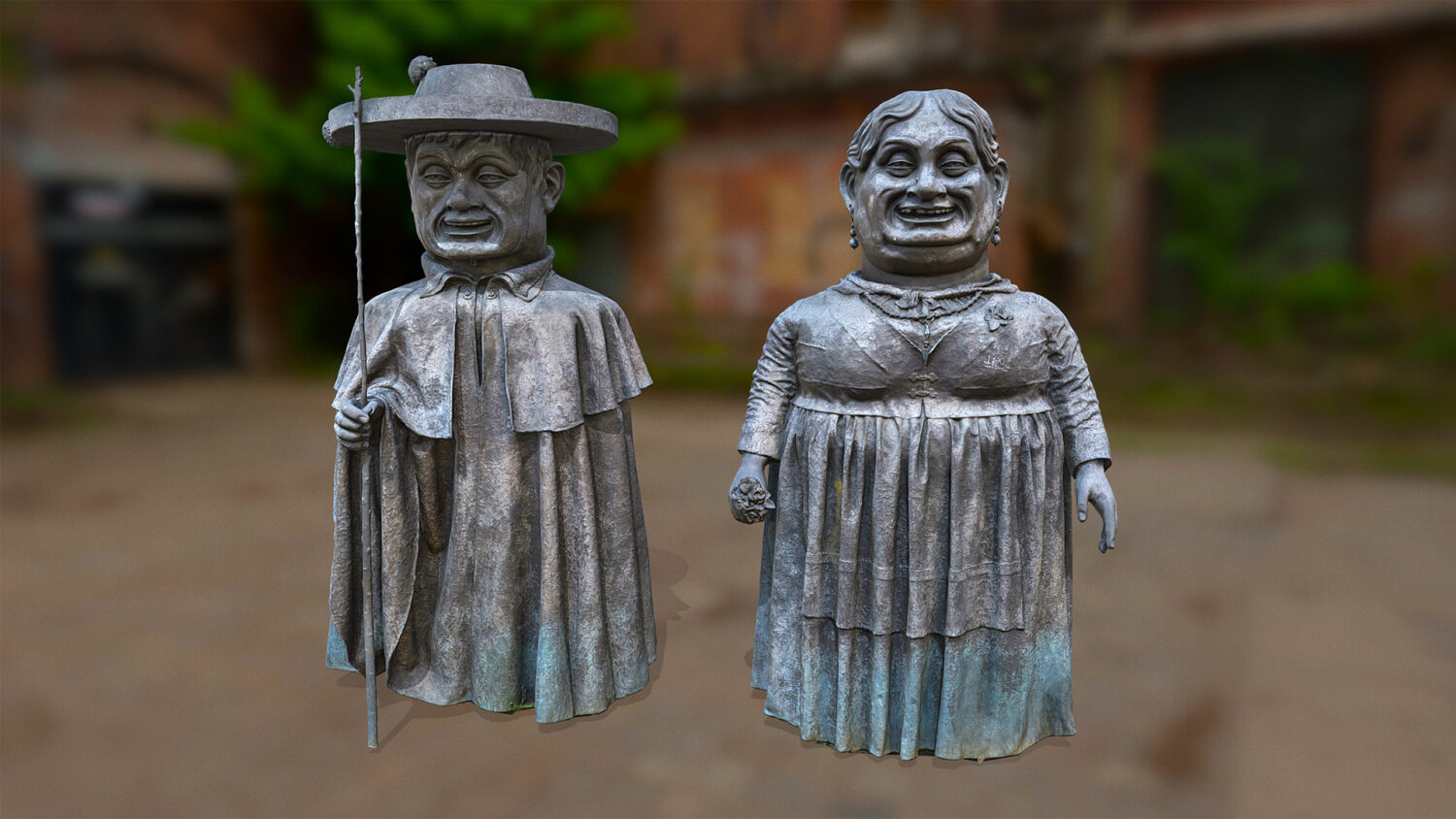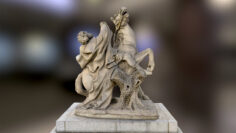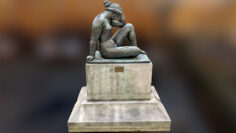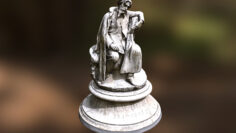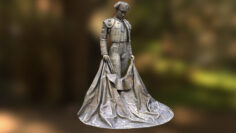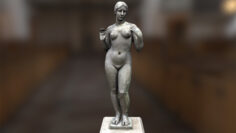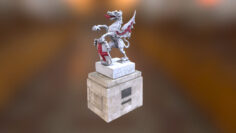The Gigantillos of Burgos
The Gigantillos of Burgos are two life-sized bronze statues that can be found in the center of Burgos, a city in the north of Spain. They represent mythical figures from the folklore of the city that traditionally dance local dances to the sound of the whistle and tambourine, and to the jota, an old Spanish dance form.
These two bronze figures are the work of Teodoro Ruiz. They weigh over 1000kg and stand 2.4 meters high, and were a gift to the City of Burgos On the occasion of the 100th anniversary of Caja Círculo. They are based on the original statues which are two papier-mâché characters that have appeared in street parades during the Burgos festivities since 1899.
It is said that If you want to say that you know Burgos and its culture, you cannot leave without stopping to see the Gigantillos dance, especially if you go during one of the typical festivals: San Pedro and San Pablo, El Corpus and Curpillos.
The Gigantillos de Burgos are direct descendants of the Gigantillas and the ancient Tarascas and Tarasquillas that existed since ancient times. They were a part of the Corpus Christi procession, which was held on the Lord’s Day, in the city of Burgos.
They represent two nice (and a little ugly) characters, we are always smiling. The woman is a graceful type, a fat villager with a long dress and an apron with velvet strips. She wears a scarf on her shoulders and her hair is done up with a doorknob bow. She carries a bouquet of flowers in her right hand and wears a smaller one on her chest.
The man wears a long, wide cape that is covered with a large, fuzzy hat and carries an ash tree rod in his right hand which is seen as a symbol of authority. It is believed that he represents a mayor of the people of the Burgos mountains.
The were modified over time to caricature the typical couple of village mayors wearing costumes typical of the region, now forgotten, and are now a part of the Burgos festivities along with other typical figures including “los gigantones” who are about 4 meters tall, and are said to represent all the people of the world.



